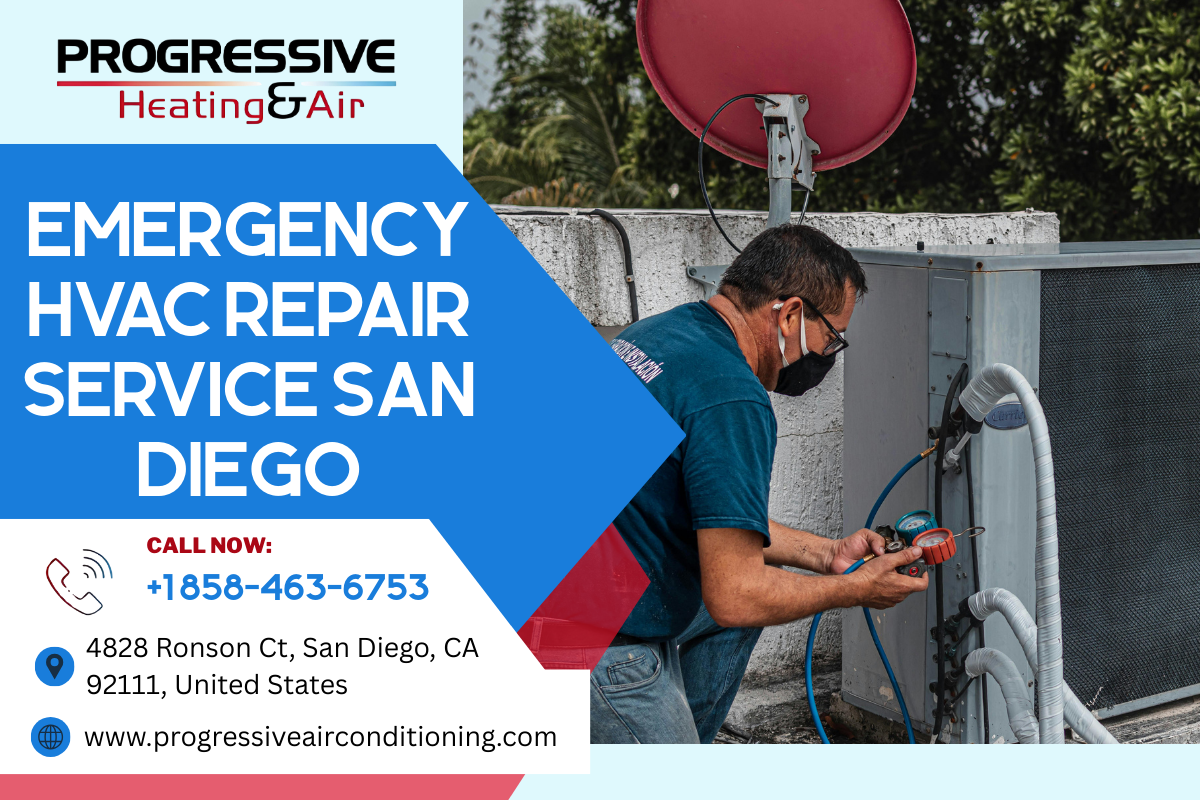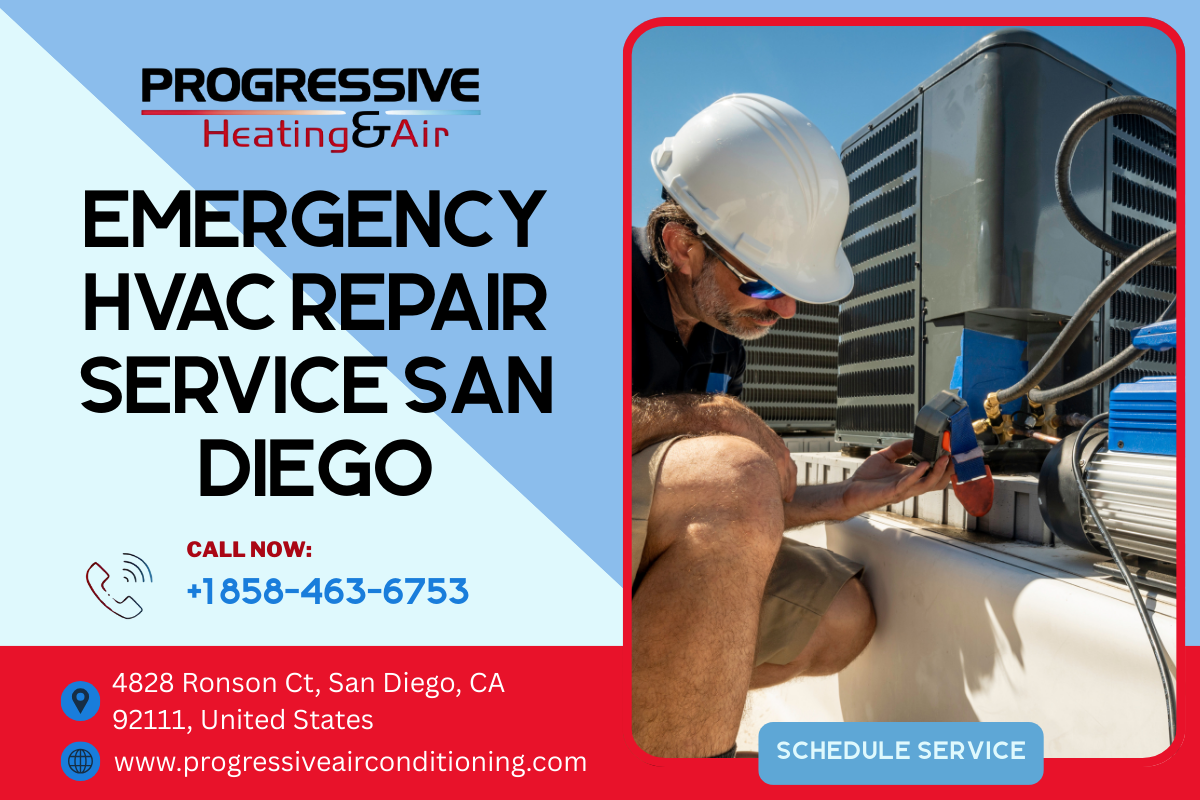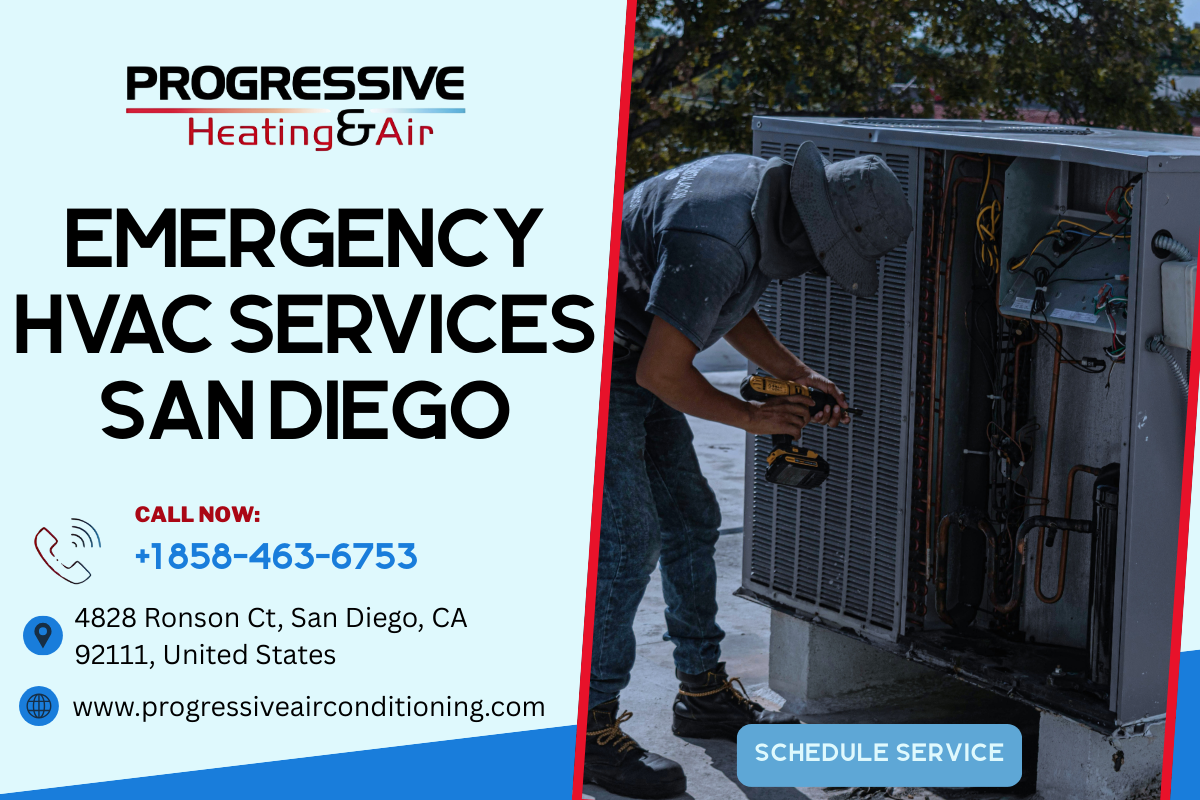


San Diego spoils us with mild afternoons, then punishes anyone with a marginal air conditioner once the Santa Ana winds roll in or humidity spikes along the coast. When indoor temperatures climb past comfortable and the thermostat doesn’t respond, waiting for business hours isn’t an option. That’s where a reliable, round-the-clock response makes all the difference. If you’re searching for 24 hour AC repair near me San Diego, you’re not alone, especially during heat waves when demand surges and tempers run short.
I’ve worked through too many midnight calls in Mission Valley, La Mesa, and Oceanside to count. The pattern is familiar. A unit tries to catch up after a long day, coils are already stressed, and something small becomes something big at the worst moment. The smartest move is to get someone competent on site quickly, but fast alone doesn’t solve it. You want the right diagnosis, the right part, and a fix that holds through the next heat burst.
What “24 hour” really means in San Diego
Any emergency HVAC company San Diego residents call after dark will advertise speed. The truth sits in their dispatch capacity, the parts they stock on their trucks, and whether they route calls intelligently across the county. Getting from Clairemont to Santee at 1 a.m. is different than mid-day on the 5. A seasoned dispatcher will ask the right questions up front, triage the severity, and send the closest technician who actually has the likely part on hand. If you hear a thoughtful intake, you’re already on better footing.
Not every problem can be fully resolved in a single visit at 2 a.m. Some components, particularly OEM control boards for variable-speed systems, aren’t sitting on every truck. A strong emergency HVAC https://gunnerrwav188.tearosediner.net/san-diego-s-emergency-hvac-company-around-the-clock-repairs repair service San Diego homeowners trust will stabilize the system overnight and schedule a targeted follow-up for the permanent fix. The goal: restore safe cooling and prevent collateral damage like coil freeze-ups that flood the condensate pan and ceiling.
Common after-hours failures and why they spike at night
Most late-night breakdowns trace to stress accumulated during the day. Systems run longer, humidity rises in coastal neighborhoods, and airflow restrictions compound. Here are the usual suspects I see when someone calls for emergency AC repair San Diego wide:
- Contactor failure or burnt wiring at the condenser. The unit runs hot all day, then the contactor welds shut or refuses to pull in. You’ll hear a hum outside, or nothing at all. Capacitor failure. Classic. The fan tries to start, stutters, or the compressor won’t kick on. Lights might dim when it attempts a start. In older neighborhoods with voltage dips, this is common. Freeze-ups from airflow problems. Dirty filters or matted evaporator coils lead to ice. You notice weak airflow, then none. If you see frost on the suction line near the air handler, power the system down to thaw before a tech arrives. Condensate clogs and float switch trips. Coastal lint and attic dust mix into a sludge in the drain line. You get intermittent shutoffs because the safety switch is saving your drywall. Failed blower motors or ECM modules. The thermostat looks fine, the outdoor condenser runs, but no air moves inside. Variable-speed blowers can fail intermittently before dying outright. Low refrigerant, usually from micro-leaks. It might have “worked yesterday,” but when the load peaks, the system can’t hold the evaporator above freezing and the coil locks up.
The reason nights are worse is simple physics. Your house radiates the day’s heat well into the evening, so the system keeps working hard. Weak components that held on at 2 p.m. give up at 10 p.m.
What to do before the tech arrives
You can prevent additional damage and sometimes restore partial operation. Keep it simple and safe.
- Set the thermostat to “fan on” for 20 to 30 minutes if you suspect icing. This helps thaw the coil. If you see frost on lines or hear slushing, turn cooling off. Check the filter. If it’s clogged, replace it. A fresh filter can restore airflow enough to limp through the night. Inspect the outdoor unit. Clear any debris, and make sure the disconnect isn’t tripped. If you smell burning or see melted insulation, leave power off and wait for the pro. Look for water near the indoor unit. A wet ceiling around a hallway return or a pan filled in the attic tells you the drain is clogged. Don’t keep forcing the system on. Note error codes. Many thermostats and furnaces display blink codes. A quick photo helps your technician prep the right parts.
That’s the short list. Don’t start removing access panels or pushing contactors with a stick. I’ve seen enough shocked homeowners to keep that on the “never” list.
How qualified techs diagnose at 1 a.m.
Anyone can swap a capacitor. The craft shows up in the steps that follow. A good emergency HVAC company San Diego residents rely on brings more than parts. They bring a diagnostic process that holds under pressure:
- Visual survey first. Wiring discoloration, oil residue on lines, and UV dye traces tell stories. An experienced eye spots patterns quickly. System vitals. Suction and liquid line pressures, superheat, subcooling, and temperature splits across the coil. Nighttime ambient conditions can skew readings, so the tech compensates with target tables and manufacturer data. Electrical checks under load. Capacitors tested with a meter, voltage drops across contactors, amp draws compared to nameplate specifications, and ECM error retrieval if applicable. Airflow verification. Static pressure readings across filters and coils, blower wheel inspection, and damper position checks. Poor airflow mimics refrigerant problems, so it’s critical to separate the two. Safety controls. Drain switch function, high and low pressure switches, and flame safety if the system is a combined furnace and AC.
The difference between a temporary cool-down and a dependable fix lies in these steps. If someone changes a part without readings, they’re guessing. That can get you through the night, but it sets you up for repeat visits.
What “same day air conditioner repair” usually covers
People hear same day and think every job is a quick save. Most are, provided parts are on hand. In San Diego, same day air conditioner repair typically includes:
- Capacitors, contactors, hard-start kits, fan motors for common models, and universal relays. Clearing condensate clogs, replacing drain switches, and reworking traps that were never pitched properly. Refrigerant adjustments for standard R-410A systems, with leak checks to confirm stability. Permanent repairs for significant leaks require scheduling. Thermostat replacement and reconfiguration, especially when DIY smart thermostat installs cause compatibility issues.
What doesn’t always qualify for overnight completion: proprietary control boards, certain inverter-driven compressors, and oddball OEM motors. The right 24 hour emergency HVAC company will be transparent about what can be stabilized now and what needs a quick return visit.
Cost honestly explained
After-hours work costs more. That’s reality, not a sales tactic. The premium covers on-call staffing, parts staging, and the fact that two-hour response at midnight is a different promise than “sometime tomorrow.” Here’s how pricing usually breaks down in San Diego:
- Diagnostic fee with an after-hours surcharge. Expect a base diagnostic in the $79 to $159 range during regular hours, rising to roughly $149 to $299 overnight or on holidays. Some companies credit the diagnostic toward repairs. Flat-rate repairs for common parts. Capacitors, contactors, and drain clearings often fall into predictable price bands that include labor and warranty. You want clarity before the work begins. Refrigerant pricing per pound. R-410A prices have stabilized somewhat, but total cost depends on how much your system needs and whether there’s a confirmed leak. Refilling without leak verification is a bandage. Follow-up visit allowances. If a system is stabilized but needs a specialty part, reputable companies often waive the second diagnostic when returning with the part during normal hours.
If you feel blindsided, ask for a line-by-line explanation. A fair contractor welcomes the question and explains the part cost, the labor involved, and the warranty you’re buying with it.
Choosing an emergency HVAC company San Diego can trust
Search terms like emergency hvac repair service san Diego and 24 hour AC repair near me San Diego pull plenty of results. Here’s what separates dependable outfits from the rest:
- Dispatch depth and coverage. A single tech on call can’t cover the county on a hot night. Ask about their average response time and the neighborhoods they can realistically reach after hours. Inventory on wheels. Trucks should carry a range of capacitor values, contactors, universal fan motors, common drain parts, and enough R-410A to handle more than a top-off. If they show up empty, you wait twice. Licensing and insurance, verifiable quickly. A legitimate company provides their CSLB license number and proof of insurance without hesitation. Real warranties on parts and labor. Thirty to ninety days on common repair parts is normal. Control boards and motors often carry longer manufacturer warranties. Straight answers, not miracle promises. If a tech tells you an 18-year-old unit “just needs refrigerant and will be fine for years,” be skeptical. Good pros give you the likely lifespan and options in plain language.
When repair isn’t the smartest money
I’m not the person who pushes replacement when a $200 fix will do. But there are moments, even in an emergency, where repair keeps throwing good money after bad. Consider replacement if:
- The system is over 15 years old and has major component failures like compressor or indoor coil leaks. The efficiency loss plus repair cost stacks up fast. You have repeated refrigerant losses across seasons. Small leaks in older coils can be a recurring expense, and the performance penalty sticks around. Your utility bills are out of line with neighbors. Older 10 SEER units cost noticeably more to run than modern 15 to 20 SEER2 systems, especially in inland valleys. Comfort is uneven across rooms and the ductwork is suspect. New equipment with proper duct corrections can solve what band-aid repairs never will.
A solid emergency HVAC company will stabilize you now, then give you a fair, itemized estimate for replacement, including proper load calculation and duct evaluation. You don’t have to decide at 1 a.m., but you should have clear numbers within a day or two.
The coastal twist: salt, humidity, and microclimates
San Diego’s zip codes don’t behave the same. In Point Loma and Pacific Beach, salty air accelerates corrosion on outdoor coils and electrical lugs. Inland, places like El Cajon deal with higher summer peaks that expose weaknesses faster. North County coastal areas see prolonged humidity that taxes condensate systems. This matters for maintenance intervals and part selection:
- Outdoor coils closer to the ocean need more frequent rinse-downs and occasional protective coatings. Electrical terminations should be inspected and treated with anti-oxidant compounds. Condensate management matters more in humid microclimates. Clear traps, proper slope, and clean secondary drain pans stop emergency ceiling repairs later. Shade and airflow around condensers are not aesthetic details. Tucked units behind fences or dense landscaping overheat under long runtime. Clearing a foot or more around the unit improves performance immediately.
Technicians who work these neighborhoods know the failure patterns and often carry parts accordingly. Ask them what they see most in your area. The answer tells you if they know the terrain.
What your warranty does and doesn’t cover at 2 a.m.
Manufacturer warranties cover parts, not after-hours labor. If your unit is within its parts warranty, the replacement part may be free, but someone still has to pick it up and install it overnight. Extended labor warranties vary widely. Read the fine print:
- Some third-party warranties exclude after-hours calls entirely, covering only business-hour labor rates. If your system requires a proprietary part and the vendor is closed, the warranty benefit starts tomorrow, not now. A temporary fix gets you by. Proof of regular maintenance may be required. Keep records. Lack of documentation has voided more than one claim.
It’s frustrating to hear “part is covered, labor is not,” but it’s standard. A transparent company will show you the warranty terms and how they’re applying them.
Maintenance that actually prevents emergencies
I’ve seen maintenance plans that amount to a filter change and a quick coil glance. That’s not what keeps you out of the emergency queue. Effective maintenance should include:
- Static pressure measurements and airflow diagnostics. Numbers, not just eyeballing. If your system runs at high static, it will fail early and cool poorly. Electrical testing under load. Capacitor tolerance checks, tighten terminals, inspect contactors for pitting, and verify voltage balance where applicable. Deep coil cleaning when needed, not just a spray-and-go. If the evaporator is impacted, you feel it in the vents. Proper cleaning requires access and care to protect the coil fins. Condensate system service. Clear drain lines, verify trap design, and test float switches. A float switch is cheap insurance if your air handler sits over living space. Refrigerant performance evaluation. Not every visit needs gauges attached, but temperature split and system behavior should dictate whether to connect and measure.
Do this twice a year here, especially if you’re near the coast or run the system hard inland.
How to think about efficiency when you’re overheated
When you’re hunting for emergency AC repair, efficiency can feel like a later problem. Keep two practical ideas in mind even during a crisis:
- Lowering the setpoint isn’t a turbo button. If your home is 82 and you set the thermostat to 68, the system will run and run, but it won’t get there faster. Set it two to three degrees below current indoor temperature, let it catch up, then stair-step down. Ventilation and shading pay back immediately. Close blinds on sun-exposed windows in the afternoon, especially in east and west rooms. Ceiling fans move heat off your skin and let you raise the setpoint one to two degrees without losing comfort.
If your unit is borderline sized, these tricks can be the difference between limping through the night and tripping safeties.
What a good after-hours visit feels like
Speed matters, but so does calm. The best 24 hour AC repair near me visits I’ve been part of follow a consistent rhythm. The tech confirms the problem you described, sets expectations about timing and cost, communicates findings in plain language, and shows you the failed parts if relevant. They clean up their work area, leave the system performing within spec, and email a report that includes photos and readings. There’s a direct number to call if something changes overnight.
If you receive that level of service when you’re stressed and sleep-deprived, you’ve found an emergency HVAC company worth keeping on speed dial.
A quick homeowner triage guide for hot nights
Use this short checklist to stabilize your home while you wait for an emergency hvac repair service San Diego team:
- Switch the thermostat fan to “on” for 20 to 30 minutes if you suspect a freeze-up, then retry cooling. Replace or remove an overly clogged filter to restore airflow temporarily. Confirm the outdoor disconnect is seated and breakers are not tripped. Don’t reset repeatedly if it trips again. Look for condensate overflow and shut the system off if water is present to protect ceilings and floors. Gather model numbers from the outdoor and indoor units, and note any error codes for the tech.
The bigger picture: reliability is a system, not a part
Most late-night failures have a backstory. Small airflow restrictions, sloppy drain design, aging capacitors running out of tolerance, and duct leaks that force the system to run longer than it should. When you call for 24 hour AC repair near me, ask the technician one more question after the immediate fix: “What set this up, and how do I keep it from happening again?” A professional will give you a candid answer. It might be as simple as upgrading a filter type and cleaning a coil, or as big as reworking return air and sealing ducts in an older home.
San Diego’s climate is kind to HVAC compared to Phoenix or Vegas, yet our variety of microclimates and coastal corrosion plays its own tricks. Treat maintenance like insurance, choose an emergency hvac company San Diego neighbors recommend for honesty, and keep your expectations realistic about what can be done at 3 a.m. Most nights, a good team can get you comfortable again, then return with any specialty parts in daylight.
When the heat hits and your system blinks, there’s no virtue in trying to wait it out. Search for 24 hour AC repair near me, ask a few pointed questions about response time and parts on board, and let a pro take it from there. Comfort restored, sleep saved, drywall spared. That’s the outcome that counts.